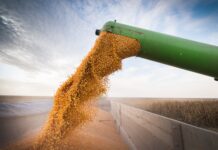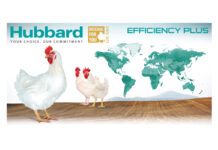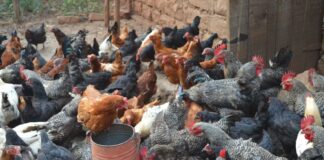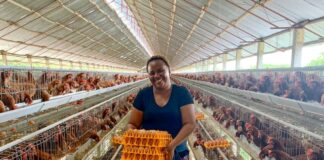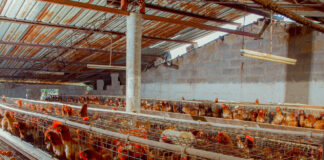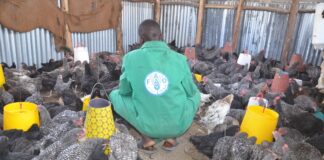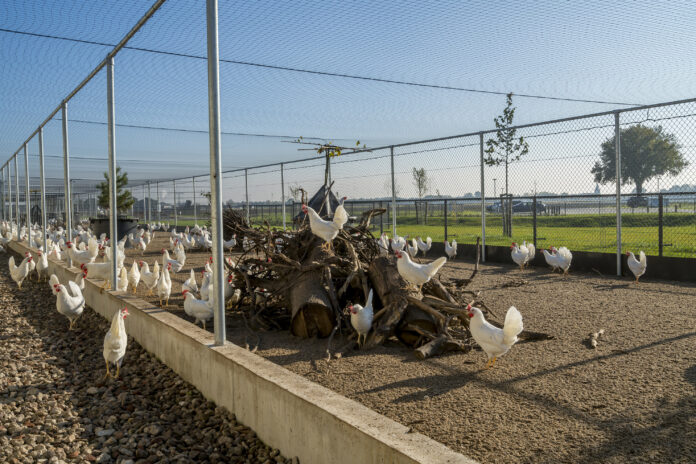
In the United States, as of March 2024, 40% of eggs produced are cage-free. While the cage-free movement has gained momentum worldwide, one company goes beyond the baseline standard of cage-free and takes a unique approach to maximize the benefits of its system. Kipster is on a mission to revolutionize food production by prioritizing ethics and sustainability, ensuring a healthier planet for future generations. The result is better for the birds, the earth, and you.
Most hens that lay eggs for human consumption in the United States are raised in a conventional system where laying hens are confined to battery cages. A myriad of welfare issues result from conventional battery cages: they restrict the space available to hens, and deprive them of essential environmental features, such as perches, nesting areas, and solid ground with earth and vegetation for foraging – crucial for their natural behaviors. Companies and consumers have become increasingly aware of alternative production systems for laying hens raised for their eggs and are demanding more cage-free, free-range, and pasture-raised housing. Many companies have set goals to eliminate caged eggs from their supply chains. Because of this, U.S. egg producers have a unique opportunity to meet this increased demand.
Kipster has taken an alternative approach to raising hens: one that prioritizes animal welfare standards, enhances farmer well-being, benefits the environment, and improves the overall production cycle.
About Kipster
Kipster opened their first operation in the Netherlands in 2017 and then expanded into the United States in 2022. Kipster’s co-founders sought to find a way to feed the world’s population in an honest way, not passing any cost to future generations. MPS Egg Farms, the exclusive producer of Kipster eggs in the United States, operates seven farms across the United States that raise more than 14 million hens. Kipster, operated by MPS, is in Indiana. The Kipster farm has three hen houses, with each housing 24,000 birds. The retailer Kroger Co. brings the unique egg to market in collaboration with Kipster and MPS Egg Farms. Sam Krouse, the CEO of MPS Egg Farms, shared about the value of the Kipster brand: “If consumers value animal welfare, animals expressing natural behaviors, and chickens living more like they do in the jungle, there are models for that. I think Kipster is the greatest example of that.” By expanding its model into the United States, Kipster sets a new higher standard for animal welfare in the United States with its attention to the true nature of hens raised for their eggs.
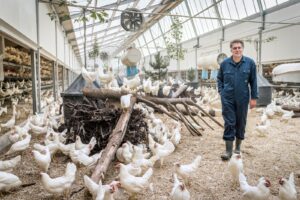
Animal welfare at Kipster
Kipster has built its business around meeting the implicit nature of birds. Their innovative facilities were designed in collaboration with leading scientists and animal welfare organizations to suit a hen’s inherent needs as a forest bird. Each farm is set up for the hens to carry out as many natural behaviors as possible. Key differentiators of the Kipster farm include both an indoor and outdoor garden with regular outdoor access pending bird flu risks, dust baths, and perches, which allow the birds to explore and play in their environment. Kipster’s indoor garden includes perches, tree trunks, deep bedding, and large windows to allow natural light inside to benefit the birds.
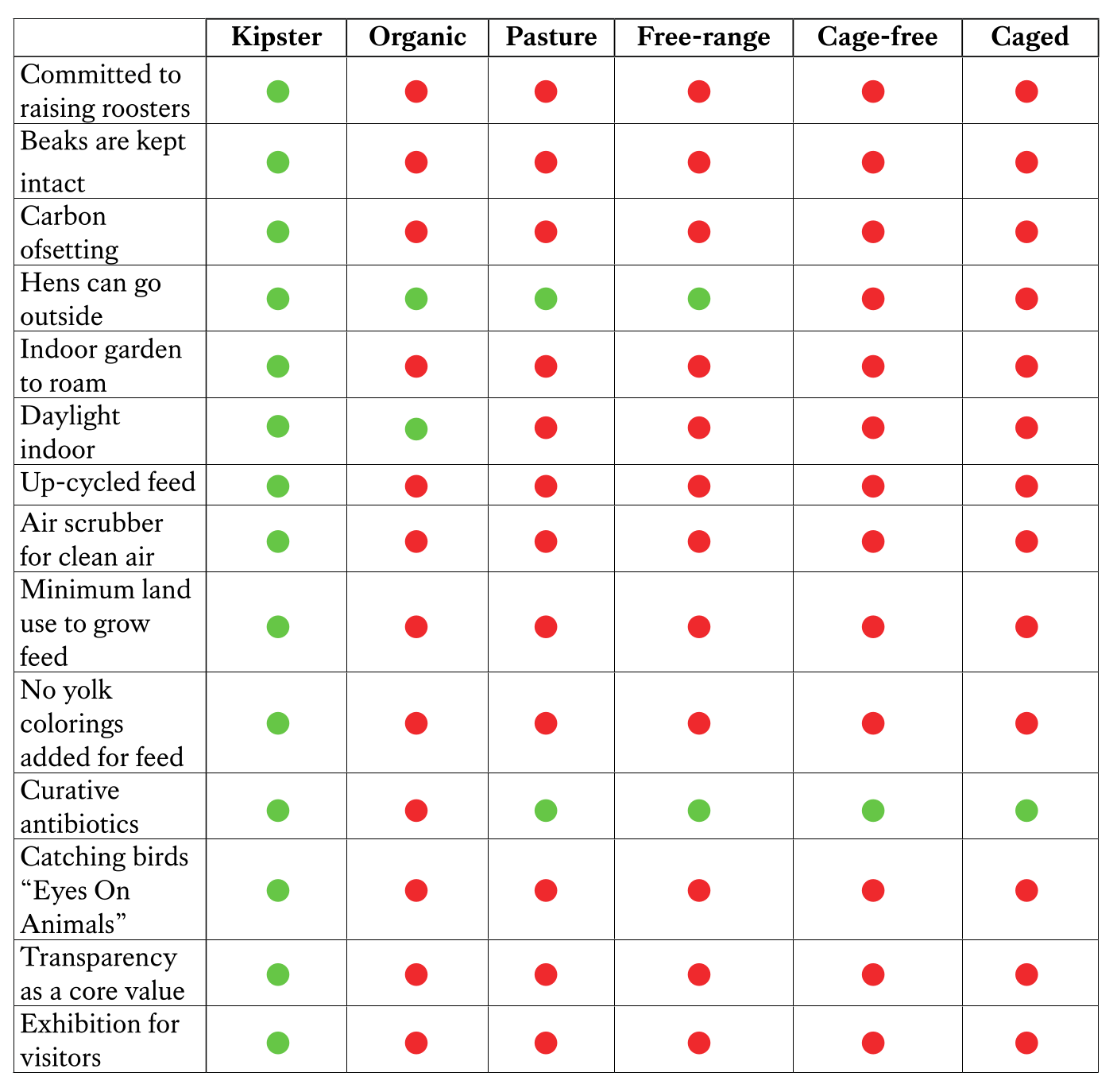 Kipster uses the DeKalb White breed and does not beak trim (debeak) the birds, which is a mutilating practice performed without any pain control as an industry norm. Beak trimming is meant to limit aggression and pecking by blunting a bird’s beak, removing approximately one-third of the beak. Instead of beak trimming the birds, Kipster prioritizes an enriched environment with pecking stones, hay bales, and scattered feed to keep the birds active and foraging. Kipster also allows ample space indoors and outside, so the birds have room to run, flap their wings, and explore their environments. Each bird in the Kipster house has 1.61 square feet of space, and the outdoor access areas provide an additional 0.98 square feet per bird. Comparatively, one battery cage can be used to house laying hens of up to 10 birds, fully enclosing the birds in a wire mesh, barren environment. In a battery cage, the average space allowance per bird is approximately 67 square inches, less than 0.5 square feet per bird, and slightly less than a letter-size sheet of paper. To verify its practices, Kipster eggs in the United States are certified by the third-party program, Certified Humane.
Kipster uses the DeKalb White breed and does not beak trim (debeak) the birds, which is a mutilating practice performed without any pain control as an industry norm. Beak trimming is meant to limit aggression and pecking by blunting a bird’s beak, removing approximately one-third of the beak. Instead of beak trimming the birds, Kipster prioritizes an enriched environment with pecking stones, hay bales, and scattered feed to keep the birds active and foraging. Kipster also allows ample space indoors and outside, so the birds have room to run, flap their wings, and explore their environments. Each bird in the Kipster house has 1.61 square feet of space, and the outdoor access areas provide an additional 0.98 square feet per bird. Comparatively, one battery cage can be used to house laying hens of up to 10 birds, fully enclosing the birds in a wire mesh, barren environment. In a battery cage, the average space allowance per bird is approximately 67 square inches, less than 0.5 square feet per bird, and slightly less than a letter-size sheet of paper. To verify its practices, Kipster eggs in the United States are certified by the third-party program, Certified Humane.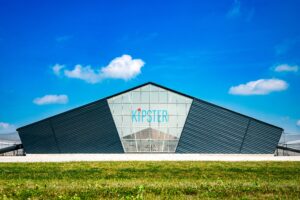
Ruud Zanders, the Co-Founder of Kipster, shares his farming philosophy, reflecting on a pivotal realization: “I lived all my life between livestock, but then I was shocked when I learned about intelligent emotion and feelings from animals. As a food farmer, I didn’t know so much about the animals themselves, but how I can keep and treat them, to keep them healthy, that they have enough eggs, but not too much feed. But now I know. That’s why we try our utmost to give them the best life; we approach that natural way as much as possible. Realizing that truly animal-friendly animal husbandry in a commercial manner is very difficult, if not impossible. You always make concessions.”
 Caged hen farms contribute to many of the largest agricultural sustainability and animal welfare issues. Kipster is paving a path that offers big solutions, leading the way for alternative models in the U.S. egg marketplace. By prioritizing sustainability, animal welfare, and farmer well-being, Kipster offers solutions to many of the industry’s main challenges of battery cages for hens, poor farmer wellbeing, and waste. Kipster also offers a unique focus on transparency through its in-person visitor center and YouTube livestreams from the farm. Kipster posts about the daily lives of their birds on social media – both the good and the bad – so consumers can learn about the living sentient beings behind the eggs they buy.
Caged hen farms contribute to many of the largest agricultural sustainability and animal welfare issues. Kipster is paving a path that offers big solutions, leading the way for alternative models in the U.S. egg marketplace. By prioritizing sustainability, animal welfare, and farmer well-being, Kipster offers solutions to many of the industry’s main challenges of battery cages for hens, poor farmer wellbeing, and waste. Kipster also offers a unique focus on transparency through its in-person visitor center and YouTube livestreams from the farm. Kipster posts about the daily lives of their birds on social media – both the good and the bad – so consumers can learn about the living sentient beings behind the eggs they buy.
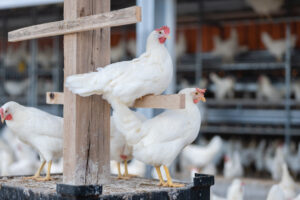 Compassion in World Farming has recognized Kipster’s leading animal welfare standards by awarding its U.S. farm the Good Egg Award in 2024, following the same recognition for its Netherlands location in 2018—making it the only egg producer in the United States to receive the award that year.
Compassion in World Farming has recognized Kipster’s leading animal welfare standards by awarding its U.S. farm the Good Egg Award in 2024, following the same recognition for its Netherlands location in 2018—making it the only egg producer in the United States to receive the award that year.
Sustainability
Kipster also believes hens can play a crucial role in combating the significant food waste problem in the U.S. Up to 40% of human-grade food is wasted in the United States each year. While the priority is reducing waste, Kipster’s hens offer another solution by transforming waste that people do not want to or cannot eat, into eggs and meat. Kipster’s feed uses food waste and by-products from crop processing and food manufacturing from wheat, corn, and soy, thus combating waste and reducing the land required to raise animals.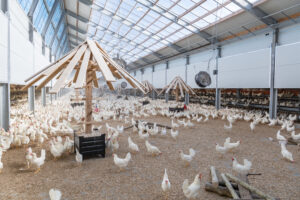
Kipster is also prioritizing lower greenhouse gas emissions by measuring, reducing, and emitting as little as possible through their innovative laying hen facilities. Kipster’s novel feed blend has a footprint that is about half of conventional feed for laying hens. This number is significant because feed is responsible for around 70% of the greenhouse gas emissions of an egg. Kipster also uses solar panels on top of the barns to help power the farm and utilizes carbon credits to offset the remaining footprint of the egg. In the U.S., Kipster eggs are certified as CarbonNeutral® by Climate Impact Partners.
A unique aspect of Kipster’s model is its approach to managing particulate matter – such as dust, odor, ammonia, and other undesirable particles – produced by laying hen operations. Kipster is the first farm in the United States to wash the air leaving its barns, recovering heat with a heat pump to preheat incoming fresh air, and – together with an innovative ventilation system – significantly reducing emissions while improving the indoor climate for both farmers and birds.
Reducing reliance on animals
Beyond its high standards for animal welfare and sustainability, Kipster envisions a better model for farming with fewer animals. The team is committed to creating a world with reduced reliance on animal products, believing that truly responsible agriculture means ultimately moving away from using animals altogether.
Kipster has defined using farm animals only under certain strict conditions:
- Sustainable: Farm animals ought to be an asset to a sustainable system, not a burden.
- Natural behaviors: Humans are obligated to honor the feelings and natural behaviors of farm animals by ensuring these animals can have fulfilling lives, as much as possible in a farm setting.
- Producing food: The rivalry between humans and farm animals over food resources should never occur. Crop cultivation should focus on producing food for humans, not for animals.
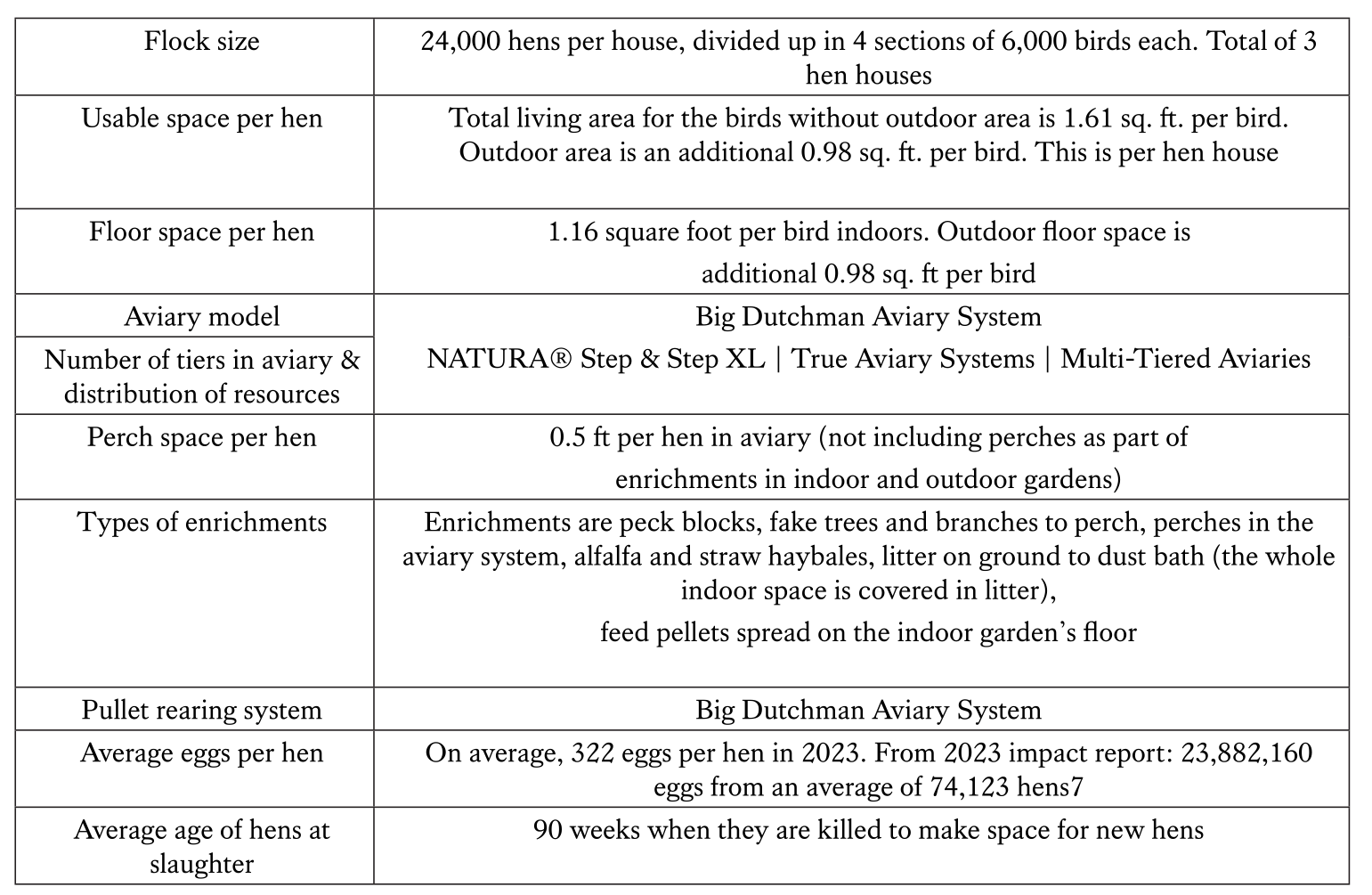
Kipster at a glance
Farmer well-being
Kipster’s system is designed to offer a more fulfilling environment for the birds, and a better working environment for the farmers. The Farm Manager at Kipster USA, Shania Ray, shared her perspective: “I have always been really focused on animals. I like the heightened animal welfare at Kipster and that the chickens can display their natural behaviors. The space the birds are allowed gives them an opportunity for dustbathing or climbing on trees and logs. They can pick at straw and alfalfa bales. They forage on the ground after we spread feed in the indoor garden. Simply put – they get to be themselves. With the chickens being able to do so much more, I interact with my employees even more to discuss what they are seeing in the houses. They walk every day for routine checks, and they notice the chickens doing different things. It helps them get more excited about their job too.”
CIWF’s recommendations
The Kipster model is a great alternative to conventional caged systems, but even to indoor-only cage- free models that may limit certain aspects of laying hen welfare. By prioritizing hen welfare, farmer well-being, and carbon-neutral egg production, Kipster is a model that benefits animals, people, and the planet. Compassion in World Farming applauds Kipster’s work. CIWF would like to see continued growth of Kipster’s model in the U.S. and new retail partnerships nationwide, so the public has greater access to Kipster eggs.
Unlike most U.S. egg producers, Kipster previously raised both male and female chicks, with the first few flocks of male chicks in the U.S. being grown as roosters for meat. However, there is a lack of suitable infrastructure to process the meat into products for the market. Kipster is continuing to work to find solutions for this.
References
U.S. Department of Agriculture. Economic Research Service.
https://www.ers.usda.gov/data-products/charts-of-note/charts-of-note (1.5.2024).
CIWF. Welfare Sheet: Laying Hens.
https://www.ciwf.org.uk/media/5235027/Welfare-sheet-Laying-hens.pdf (2012).
CIWF. Welfare Issues for Laying Hens.
https://www.ciwf.com/farmed-animals/chickens/egg-laying-hens/welfare-issues/ (2025).
Kipster. FAQ.
https://kipster.farm/faq/ (2025).
Kipster. How We Cut Our Greenhouse Gas Emissions.
https://kipster.farm/how-we-cut-our-greenhouse-gas-emissions/ (2025).
Kipster. Impact Report 2023.
https://uploads.strikinglycdn.com/files/ecb93f36-2da3-4c71-b184-6f8a641c4619/Kipster%20Annual%20Report%202022.pdf (2023).


